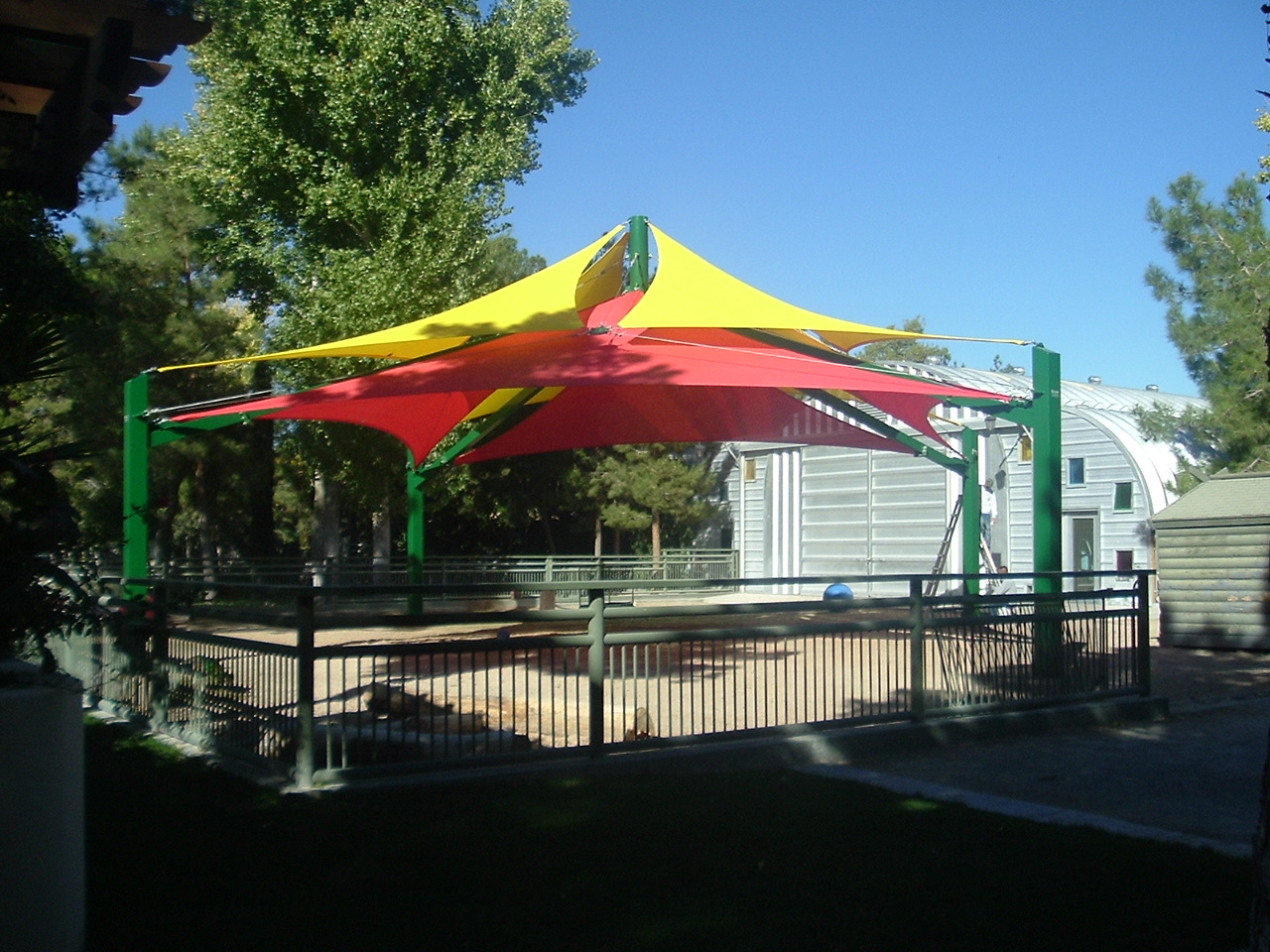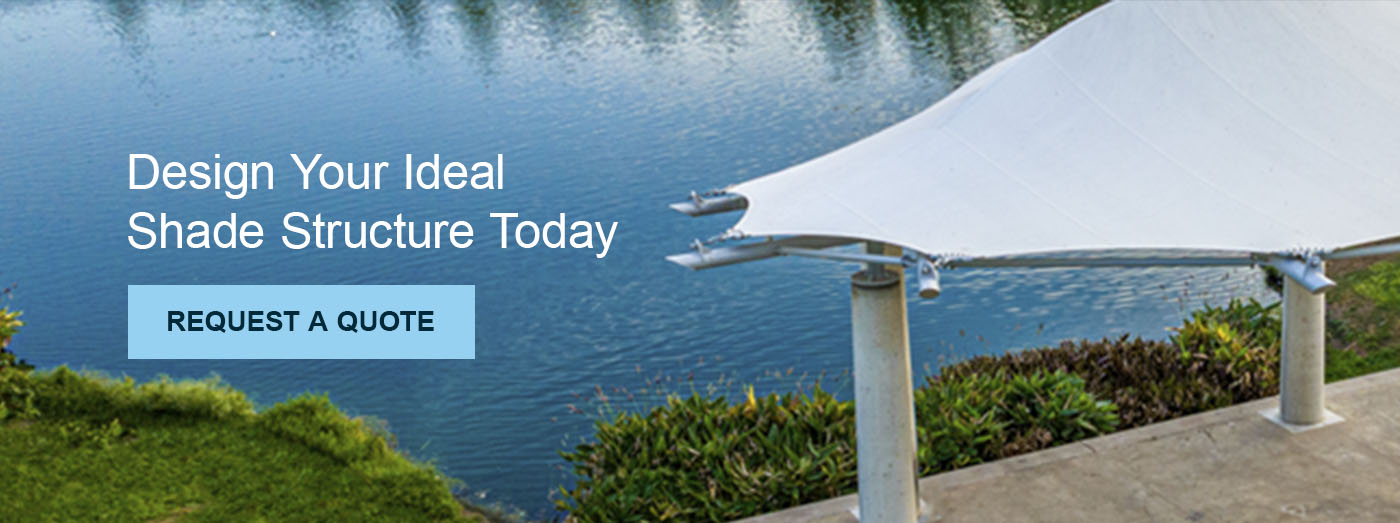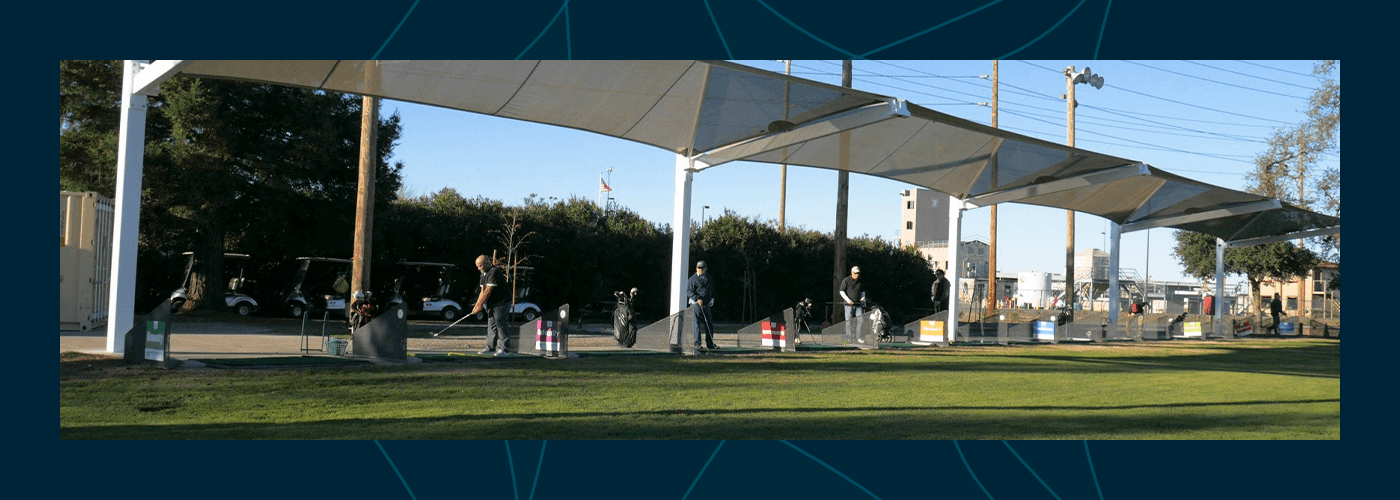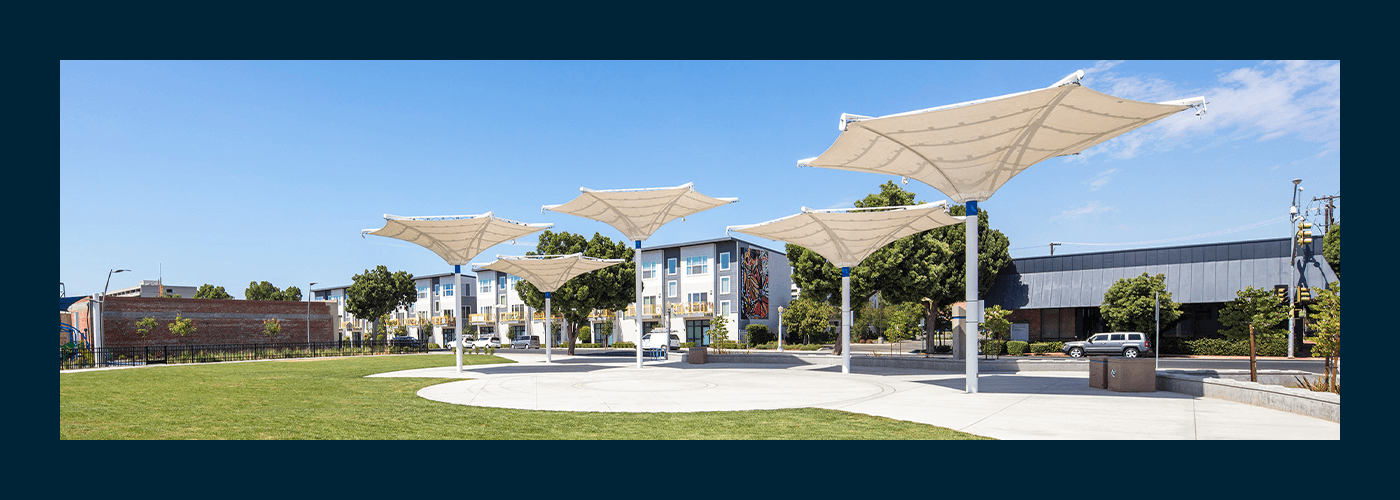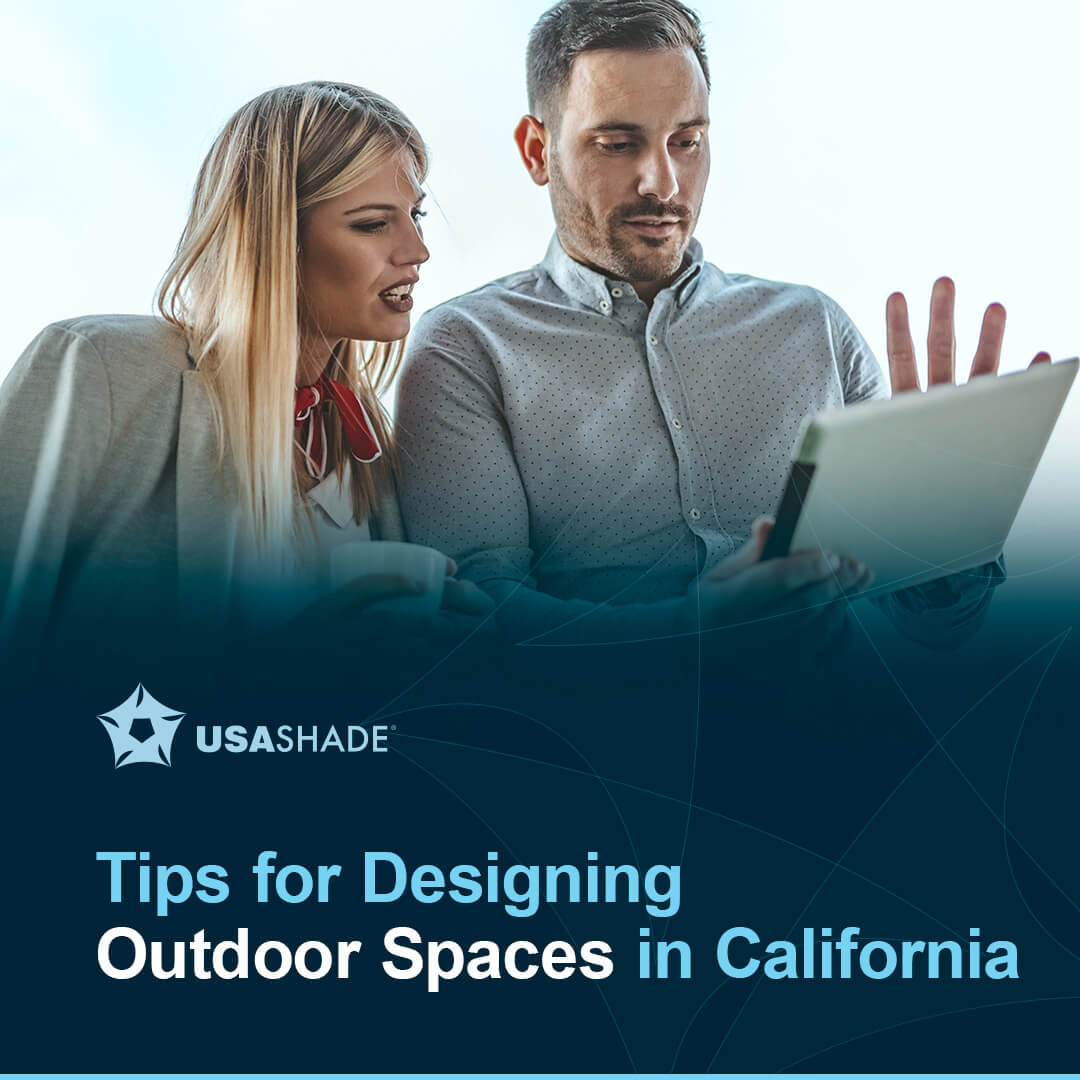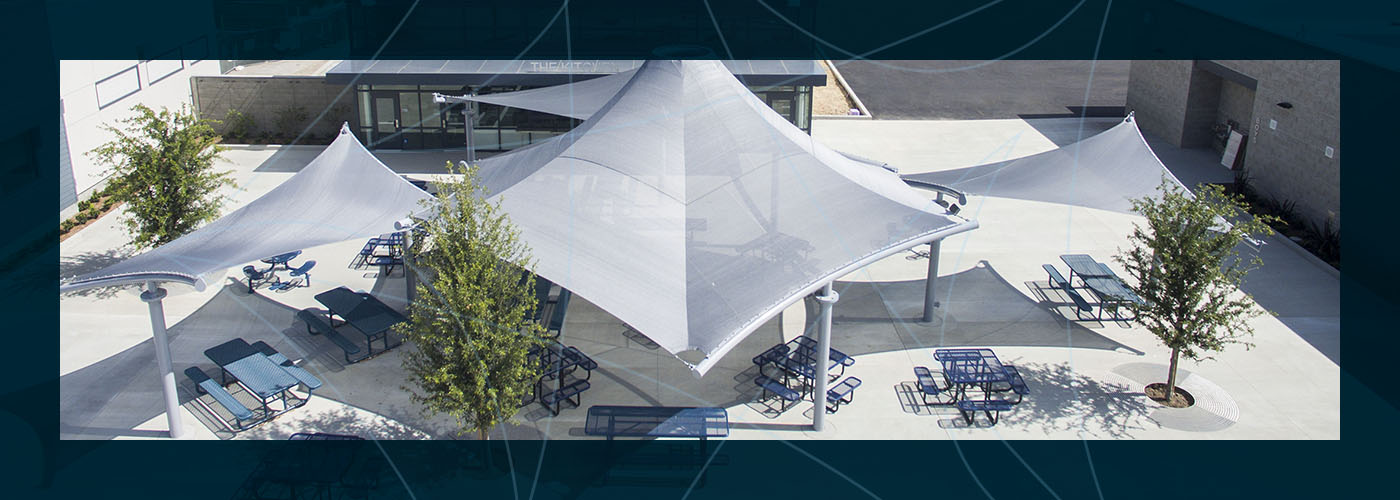

Shade structures are an effective and affordable way to protect your outdoor space and make it more user-friendly. A fabric shade will protect your outdoor patio, courtyard or playground from harsh sun and bad weather so visitors can use it more often.
Different shade materials offer unique advantages and disadvantages. This guide will explain the difference between permeable and waterproof shades to help you choose the right material for your needs.
Permeable vs. Waterproof Shade Structures
Shade structures are made from different materials depending on their purpose. Learn about permeable and waterproof shade structures below, including what they’re made of and their basic features.
What Is a Permeable Shade Structure?
A permeable shade is made from loosely woven material that allows air and water to pass through. Instead of being absorbed by the fabric, water penetrates through small spaces between the water-resistant fibers. When it rains, some water will drip through the material, and the rest will run off the sides. Air can blow through the material on windy days.
Permeable shades are made from HDPE, a high-density polyethylene mesh that is ideal for blocking out the sun. HDPE fabric blocks up to 97% of dangerous UV-A and UV-B rays. At USA SHADE, we offer HDPE materials in multiple colors with varying levels of translucency and UV protection to fit your needs. Though HDPE is not waterproof, it still provides notable weather protection by blocking 60%-70% of rain.
What Is a Non-Permeable Shade Structure?
In comparison, a non-permeable or waterproof shade is made from a tightly woven material that blocks air and rain from passing through. When rain hits the material, it beads up and flows off the sides.
Non-permeable shades offer protection from harsh sunlight, wind and rain to keep the area below dry and cool. Many schools and restaurants use waterproof shades to protect their outdoor playground or dining areas.
Non-permeable shades are made from dense, waterproof materials. Most waterproof shades are made from the following fabrics:
- Polyvinyl chloride (PVC): PVC fabric is waterproof and extremely durable. Many people choose PVC material to shield outdoor spaces from rain and harsh sun. It also protects furniture and playground equipment from the elements so they last longer. PVC shades come in many colors and patterns to match your design goals.
- Polytetrafluoroethylene (PTFE): PTFE is a strong and long-lasting fabric. It offers superior performance and durability against the elements. PTFE material can withstand high temperatures, wind and rain. It’s ideal for permanent shade structures and retractable roof systems and is also easy to clean and maintain.
- Novashield®: Novashield fabric provides shade and protection from weather at an affordable price. The waterproof woven material blocks out rain and harsh UV rays to keep the area below cool and dry. The strong and flexible material resists fading and tearing. Novashield can last up to 15 years with minimal maintenance.
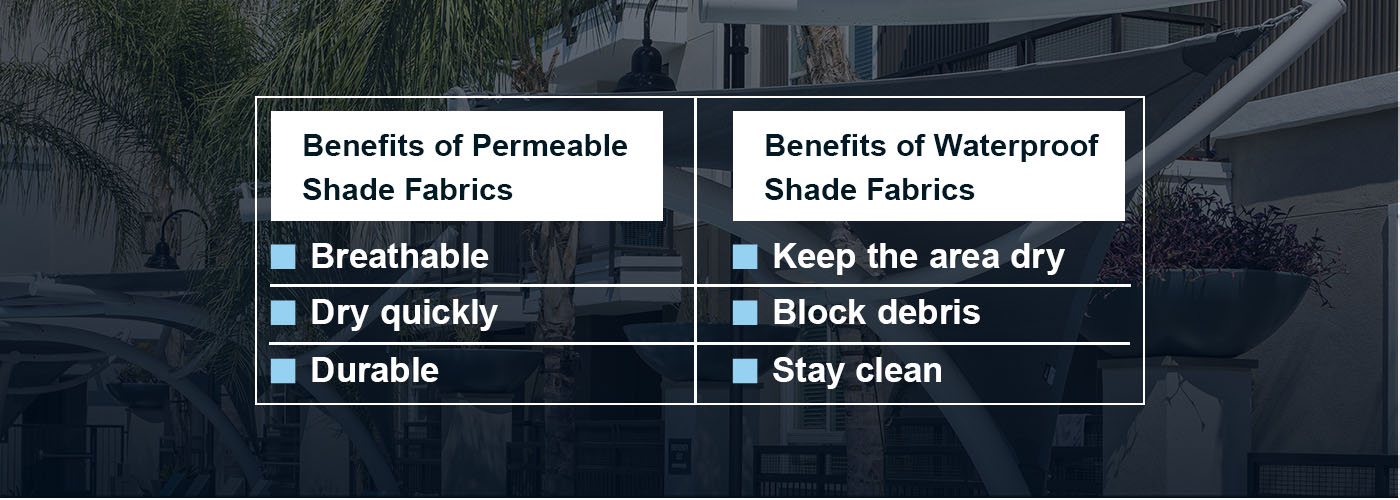

Benefits of Permeable Shade Fabrics
Permeable shade fabrics offer the following benefits:
- Breathable: On a hot summer day, wind can pass through permeable fabrics and cool the area below.
- Dry quickly: The loosely woven fabric will dry quickly after a storm to prevent mold and mildew.
- Durable: Permeable shade fabrics have small gaps in the fabric that allow air and water to pass through. Rain drains through the fabric, so there are no water pockets trapped on top that can leave stains. Wind also blows through the fabric instead of pushing against it, which helps prevent wear and tear.
Disadvantages of Permeable Shade Fabrics
When designing your shade structure, you must also consider the cons of each material. Here are the disadvantages of permeable shade fabric:
- Lack rain protection: Permeable shade fabrics allow some rain to pass through and wet the area below. They provide less protection for furniture and equipment. We recommend sloping the material to encourage water to run off the sides instead of soaking through.
- Allow some UV absorption: Permeable shade structures block most UV-A and UV-B rays, but a small percentage can pass through the material.
Benefits of Waterproof Shade Fabrics
Waterproof shade fabrics offer the following benefits:
- Keep the area dry: The main benefit of waterproof shade fabric is protection from rain. Waterproof shade structures are perfect for areas that you want to keep shaded and dry. They make it possible to continue using your outdoor space in all kinds of weather.
- Block debris: Our tightly woven waterproof fabric also helps block dirt, leaves and other debris from landing on your outdoor furniture and equipment.
- Stay clean: Waterproof shade fabric resists dirt, so debris often slides right off when it rains. You can clean waterproof shades with mild soap and water during the dry season. The area below is also easier to maintain and will require less cleaning. You can even leave your cushions out when it rains.
- Save money: Waterproof shade structures are a cost-effective option for businesses that would like to make their outdoor space usable year-round. Fabric is an affordable alternative to solid awnings that will keep outdoor areas cool without running an electric fan or air conditioner.
Disadvantages of Waterproof Shade Fabrics
When you’re choosing a material for your shade structure, you have to weigh the pros and cons. Here are the disadvantages of waterproof shade fabric:
- Must be sloped: Waterproof shades must be installed at an angle so that rain flows off the side. Otherwise, pockets of rain can sit on top of flat waterproof shades and damage the fabric.
- Must be high up: Tightly woven fabrics can trap heat if they’re installed too close to the ground. We recommend installing waterproof shades higher up so air can pass below the material.
- Must be stretched tight: Though waterproof fabrics are extremely durable, the tightly woven material must be installed properly to avoid wind damage. Loose material will flap around in the breeze, causing wear and tear. Waterproof shades should be stretched tight to improve wind resistance.
Design Your Ideal Shade Structure Today
Create a shady and comfortable place for people to enjoy with USA SHADE. Our wide selection of shade structures is sure to meet your needs and exceed your expectations. We only use high-quality and long-lasting materials with impressive UV protection. Whether you’re creating an outdoor lounge for employees or a shaded pool deck for tenants, we’ll work with you to design a shade structure that suits your business.
Browse our selection of waterproof shade structures and other shade structure materials, or request a quote today.


